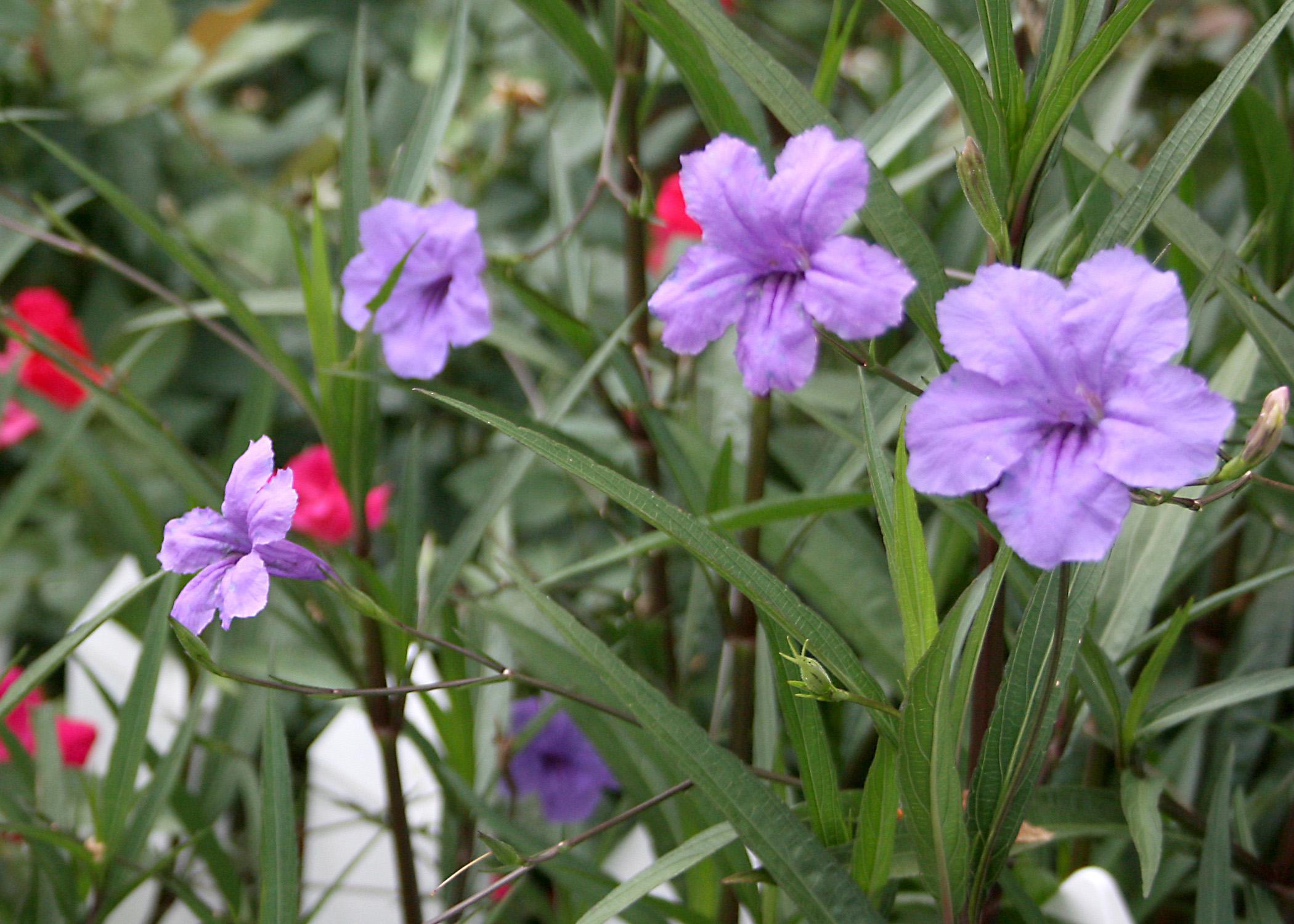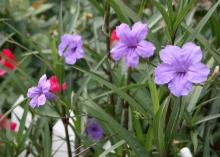Information Possibly Outdated
The information presented on this page was originally released on April 1, 2013. It may not be outdated, but please search our site for more current information. If you plan to quote or reference this information in a publication, please check with the Extension specialist or author before proceeding.
The case of the missing blue Mexican petunia
The story you are about to read is true. Only the names have been changed to protect the innocent.
It was a spring morning several years ago just like this morning when I received the call. I thought it was going to be like many others I receive. I was wrong.
The person on the other end of the phone had a neighbor’s cousin to visit the coast some years ago but wasn’t sure about the season. While at a local golf course, they had spotted a blue azalea, and now the caller wanted one.
A missing plant report. This is south Mississippi. My name is Bachman. I’m an Extension agent.
I was intrigued with the call as there aren’t too many blue azaleas around. I went to the golf course to nose around. I figured it was spring, and this would solve this case quickly. There were lots of gorgeous southern Indica azaleas blooming. The bright magenta flowers of Formosa were outstanding. But there were no blue azaleas.
The trail went cold.
In late summer, I had a hunch and reopened the missing plant file. When I returned to the golf course, it became clear that this was a case of mistaken identity. Many of the homes bordering the fairways had plants with gorgeous bluish-purple, trumpet-shaped flowers. When massed together, these plants did indeed resemble azaleas.
Taking into consideration that the caller had been zipping around in those fun little golf carts and had surely been distracted by beautiful girls driving the beverage and snack carts, it’s easy to understand the plant confusion.
I wasn’t looking for the rare blue azalea but the much more common Ruellia, which often goes by the alias “Mexican petunia.”
I know this plant because in the summer and fall, they can put on a flowering show. Mexican petunia is perfectly suited to high temperatures and frequent dry conditions. Although each flower is only open for a single day, each plant produces what seems to be an unlimited number of flower buds. In full sun, the trumpet-shaped flowers are held proudly for all to see.
Many novice gardeners plant the full-sized Mexican petunia because it is an easy, low-maintenance plant. I like not having to deadhead the spent flowers. But take care because this plant is fairly aggressive in a well-prepared landscape bed. It spreads via rhizomes, which are underground stems, and its prodigious amount of seeds. With only a little encouragement, this plant can become a weedy problem.
The dwarf Mexican petunia has a variety of disguises, with flowers of bluish-purple, pink and white. Dwarf varieties bloom all summer when the soil is consistently moist.
When I closed out the missing plant report, I told the caller how dwarf selections available at garden centers and nurseries are not aggressive but still have beautiful flowers. These only grow to about 6 to 8 inches tall and are perfect for containers.
Since I have these flowers in my own landscape, I could have solved the case sooner had I not been focused on finding a blue azalea. On the coast, they overwinter fine without additional protection, but they require a good layer of mulch in the fall to survive in more northern gardens and landscapes.









